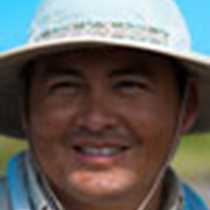After the first taste of the Galapagos Islands the previous day at Cerro Brujo, our guests were eager for the different alternatives, offered by our expedition leader, Cindy, in which to explore the island of Española.
Early risers joined us for kayaking at 06:15 am along the unique coastline of the oldest island in the Archipelago. After breakfast we all gathered at the teak deck to gear up for deep-water snorkeling and beach time. In front of the white sand beach, sea lions were playing in the small breaking surf, while many less advanced snorkelers were practicing the activity to gain more confidence in their skills.
In the afternoon the National Geographic Islander was repositioned at the far northwest point of the island of Española. For all hikers, Punta Suarez is a must. The island is older than the others in this isolated archipelago and it has its own unique ecosystem with a high percentage of endemism. We disembarked the Zodiacs onto the small pier made out of basaltic boulders, where sea lions and colorful Sally light-footed crabs greeted us. Small, sandy areas with colorful iguanas and mockingbirds were overwhelmingly beautiful. The sounds of the warbler finches delighted us while the path led us to the interior of the island.
Even though it is the end of the albatross season, our wholehearted explorers were committed to a long walk on the not so easy terrain. The effort paid off and we saw a few juvenile albatross taking off from the cliff for at least a four year trip, before returning to Española to look for a prospective mate. Along the coastline we also spotted blue-footed and Nazca boobies. Swallow tailed gulls were ready to leave their colonies for a night fishing journey and marine iguanas were staking each other on shore to stay warm for the long cold tropical night. Another astonishing day ended with a nice sunset and with our guests sharing the highlights of their day on the sundeck.







